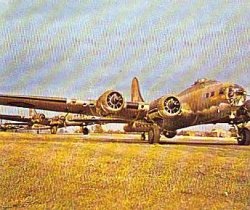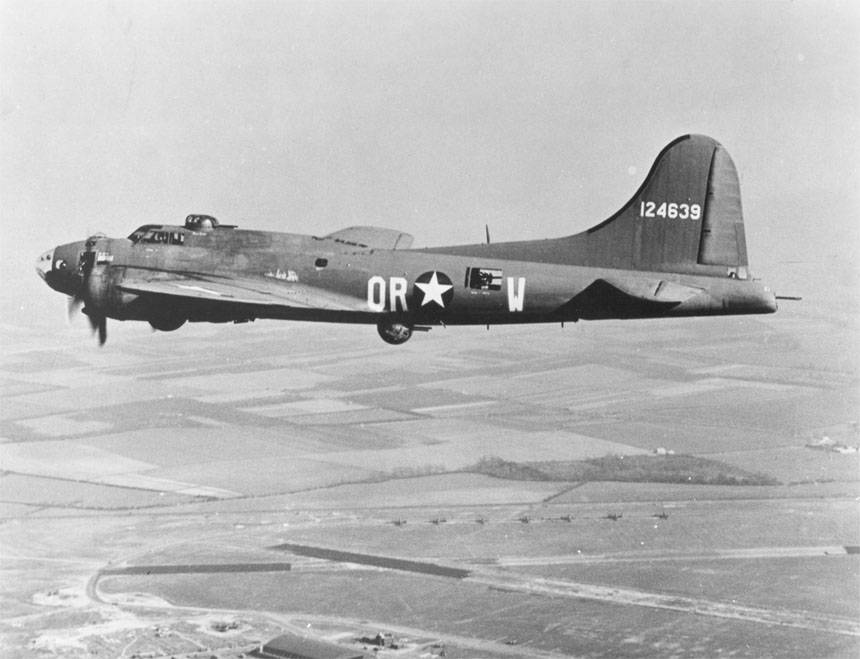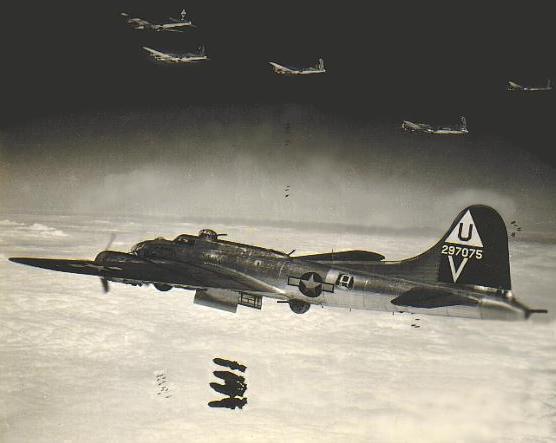Xenophon
Gone and forgotten
By request of echo...
A growing air arm in Britain
What was later to become celebrated as the US 8th Army Air Force started life early in 1942 as the 5th Army Air Force, slated for the projected invasion of North West Africa. But on 6th January 1942, only four days after its formation, the 5th AAF was redesignated the 8th AAF. The new formation was officially born on 28th January with the setting up of its headquarters in Savannah, Georgia. As the 8th AAF's units arrived for training, though, events in the Pacific led to the abandonment of the North Africa build-up, leaving Colonel Asa Duncan's 8th Army Air Force without a job.
Major-General Carl Spaatz was meanwhile busy organising what was to be called the Army Air Force in Great Britain. He now recommended to Lieutenant-General H. H. Arnold, head of the USAAF, that the 8th AAF form the nucleus of the bomber force to be based in the UK. Arnold agreed, and informed Brigadier-General Ira C. Eaker, who was to head the bomber force in the UK, that the 8th Army Air Force would be his main element. Eaker and his staff had arrived in the UK during February to set up liaison with RAF Bomber Command and start organising for the arrival of a massive American air force.
Eaker moved into his own HQ near High Wycombe on 15th April, and set about preparing for the reception of VIII Bomber Command, as the 8th AAF's bombardment formation was designated. To be centred on Hunting*donshire, with expansion into East Anglia as necessary, the 8th AAF was to reach a strength of 3,500 aircraft by April 1943: 17 heavy, 10 medium and six light bomber groups; and seven observation, 12 fighter and eight transport groups. The organisation to run such a force was great, and the 8th Army Air Force officially reached Great Britain on 18th June, with the arrival of Spaatz.
The first 8th AAF combat aircraft to arrive in Great Britain was a Boeing B-17E of the 97th Group, which landed at Prestwick on lst July after its flight across the Atlantic.
The 8th Army Air Force soon became an immense assembly of men, machines, and equipment as more and more East Anglian airfields opened up as bases.
A growing air arm in Britain
What was later to become celebrated as the US 8th Army Air Force started life early in 1942 as the 5th Army Air Force, slated for the projected invasion of North West Africa. But on 6th January 1942, only four days after its formation, the 5th AAF was redesignated the 8th AAF. The new formation was officially born on 28th January with the setting up of its headquarters in Savannah, Georgia. As the 8th AAF's units arrived for training, though, events in the Pacific led to the abandonment of the North Africa build-up, leaving Colonel Asa Duncan's 8th Army Air Force without a job.
Major-General Carl Spaatz was meanwhile busy organising what was to be called the Army Air Force in Great Britain. He now recommended to Lieutenant-General H. H. Arnold, head of the USAAF, that the 8th AAF form the nucleus of the bomber force to be based in the UK. Arnold agreed, and informed Brigadier-General Ira C. Eaker, who was to head the bomber force in the UK, that the 8th Army Air Force would be his main element. Eaker and his staff had arrived in the UK during February to set up liaison with RAF Bomber Command and start organising for the arrival of a massive American air force.
Eaker moved into his own HQ near High Wycombe on 15th April, and set about preparing for the reception of VIII Bomber Command, as the 8th AAF's bombardment formation was designated. To be centred on Hunting*donshire, with expansion into East Anglia as necessary, the 8th AAF was to reach a strength of 3,500 aircraft by April 1943: 17 heavy, 10 medium and six light bomber groups; and seven observation, 12 fighter and eight transport groups. The organisation to run such a force was great, and the 8th Army Air Force officially reached Great Britain on 18th June, with the arrival of Spaatz.
The first 8th AAF combat aircraft to arrive in Great Britain was a Boeing B-17E of the 97th Group, which landed at Prestwick on lst July after its flight across the Atlantic.
The 8th Army Air Force soon became an immense assembly of men, machines, and equipment as more and more East Anglian airfields opened up as bases.
Attachments
Last edited:








